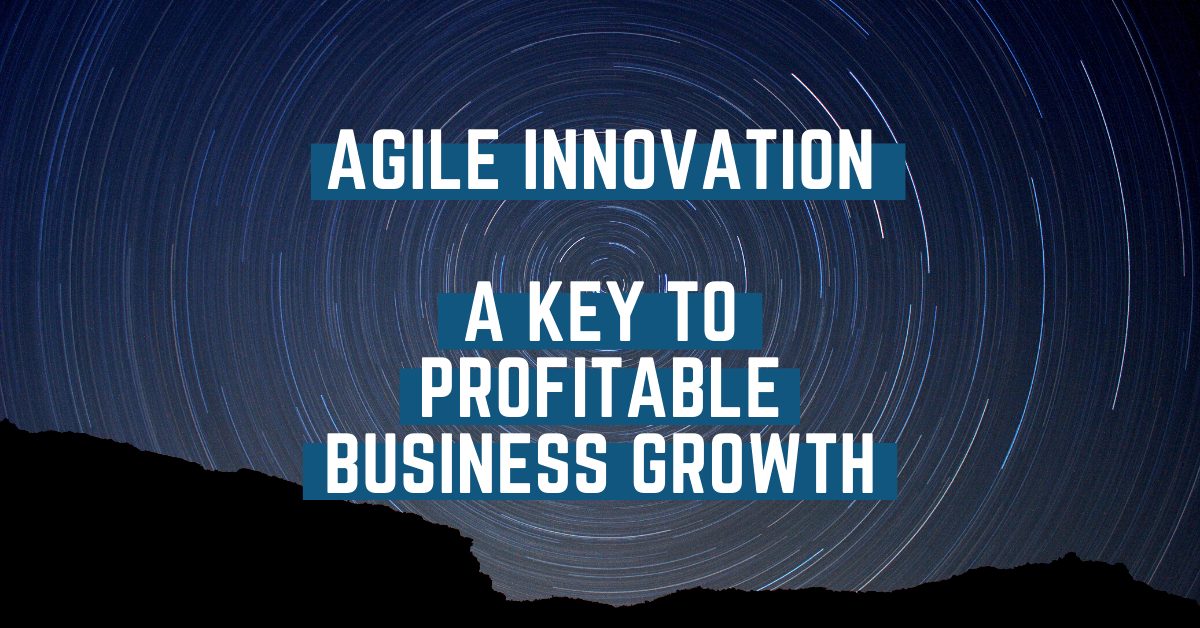An Agile Innovation approach ensures that your business can continuously deliver value to the customer and become distinct in the industry. A complete Digital Transformation might be beyond reach without a comprehensive innovation plan across the enterprise. An established organization must be in a constant state of flux in terms of innovation. The capacity of your business to change is key to profitable growth. In this blog, we break down Agile Innovation and how it can accelerate your Digital Transformation undertaking.
Digital Transformation is a people-first approach to the fundamental integration of technology throughout a business. For an established organization, it is essential to think with a strategic digital mindset and understand how Agile Innovation can play a crucial role. It will help your business deliver and adopt an ideal blend of lean principles by fostering engagement, feedback, and collaboration.
There is a systematic way to translate an updated version of business strategy relevantly across all parts of your organization. With Agile Innovation, an accelerated Digital Transformation and profitable business growth are possible by aligning small step improvements with strategic change. So, read further to know what we can learn from companies that carried this out successfully as we break down Agile Innovation.

Why is Agile Innovation Required?
The most asked question posed – ‘Why is Agile Innovation required if an organization is already undergoingDigital Transformation?‘
The answer is that even established enterprise businesses are susceptible to disruption by startups and government policy intervention that can sprout virtually overnight. Moreover, this demands companies to be in a constant state of innovation with their products or services. In other words, Digital Transformation is simply the foundation of technology across the organization that will enable rapid innovation.
Digital Transformation is about revolutionizing the business process and offering in a digital age. It is about future-proofing a business from constantly changing technologies, internal factors, industry trends, competition. Agile Innovation approach ensures that your business can continuously deliver value to the customer and become distinct in the industry.

So, Agile Methodology deployed with Digital Transformation can ensure that you see a greater return on your IT investment within a fast and highly competitive customer-centric environment.
For instance, aU.S. based financial services company cut the time it took to introduce new features by 55% and the time to test them by a drastic 70%. The cost of product development fell by a whopping 40%.
What is the insight behind being an agile company?
In a COVID world, change is the new normal. Companies embracing change as a way of business will grow and survive even the worst of times.
Agile methodology is critical for established firms to rethink their online strategy to grow faster, serve customers better, and become distinct in the market. As a result, failure to tackle disruption and build services based on consumer feedback can lead to increased churn and diminished brand reputation.
In today’s digital age, traditional structures and rules for change management no longer apply. The digital age provides an equal platform, which means a hyper-competitive and chaotic market. Eventually, every business will become a digital company. It is, therefore, essential to become a master of change. The capacity of your business to change is key to profitable growth.
An established organization must be in a constant state of flux in terms of innovation. They need to be in control to deal with government policies, regulatory pressure, financial constraints, employee management, and derailing ongoing projects while implementing changes.
In a nutshell, being agile means enabling rapid design, development, and deployment of products and services.
What is Agile Methodology?
At the center of the agile methodology lies consumer feedback. Agile brings a framework that enables rapid interactions in digital services based on constant feedback. It allows businesses to release small software iterations at a much faster pace. Then embrace a fail-fast mindset to promote rapid iterations, speed up changes, and ultimately save time to the final release.
The focus on quickly adapting to customer feedback in the methodology is a core component of Agile Innovation. It allows creating powerful digital experiences based on the customer’s likes or dislikes.
Agile teams work on modularized projects in close collaboration with consumers doing rapid iterations with feedback. They generally outperform traditional groups with approval systems. In large organizations, unproven actions are seen as a threat, and agile innovation converts this mindset to the business advantage.
The teams become more cross-functional and include all the skillset required until completion. Even though the teams have autonomy over the project, the entire process is transparent. The focus is on experimentation and feedback instead of endless debates and approvals.
There is a drastic reduction in terms of redundant meetings, repetitive planning, and excessive documentation. These actions only seem productive to the people involved. So, by adapting to consumer feedback, agile innovation brings more valuable products or services into the market faster with reduced risk of failure. Collaboration with customers also enables engagement and personalization.
What cultural changes does Agile Innovation bring about?
Agile methodology focuses on human tendencies related to empowerment, transparency, collaboration, and accountability.
Such characteristics need to be made an intrinsic part of the company culture. A culture that centers around innovation must uphold all the above tendencies in each contributor.
Agile brings about a broader cultural shift in traditional workspaces as how people and teams work together. The challenge in implementing the methodology, in large organizations, is to break the barriers of departments and cross-functionality to build small but skilled teams. It is also essential to impart training from management to employees with a top-down approach.

An established business will also need to break years of habit before bringing in about a culture of innovation. Companies need to adapt to more accountable systems and remove the toxicity that hierarchical arrangements bring about. All such changes must be done in parts and small incremental changes. Moreover, teams need to be objective about their shared goals and learn how to handle end-users and their changing priorities.
Conclusion
A complete Digital Transformation might be beyond reach without a comprehensive innovation plan across the enterprise.
An approach like Agile Innovation makes technological transformation easier and enable more value output. It helps the IT investment of a company transcending beyond the IT department across the organization and eventually to the consumer. This is possible as Digital Transformation has a people-first approach while Agile Innovation focuses on consumer value.
In conclusion, agile has never solely been about the software. It uses software to create digital experiences for people in a much faster fashion. Agile brings about a change in a business that comes from within and flows into the customer.



